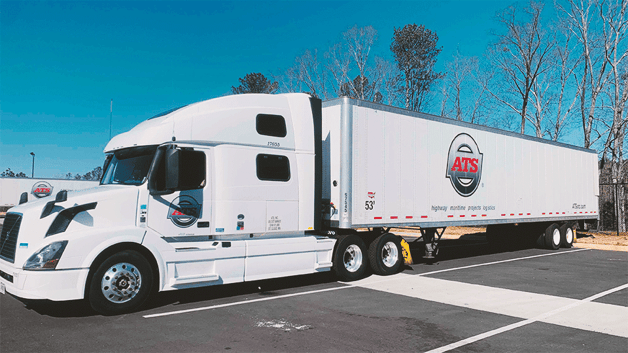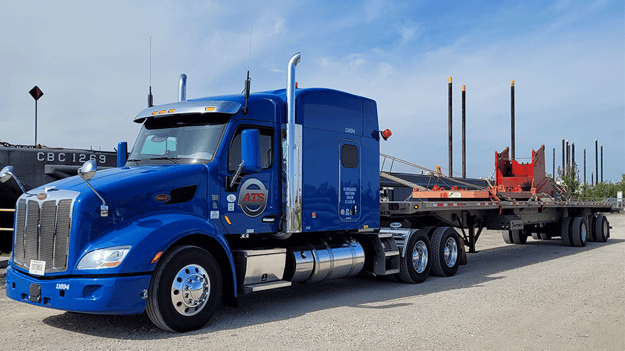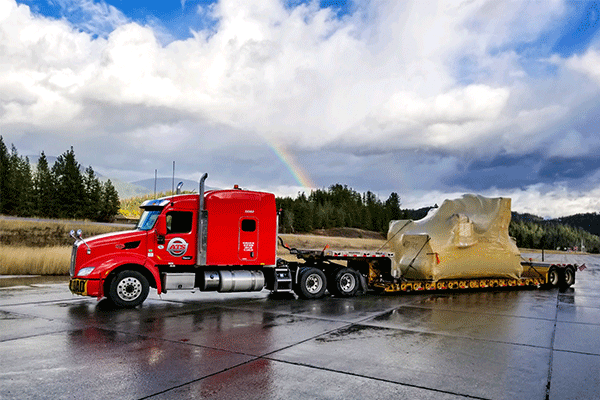
Key Takeaways:
- Ship before or after Aug. 29-Sept. 1 to avoid Labor Day rate spikes.
- Pre-holiday shipping and Midwest harvest season will tighten dry van and reefer capacity.
- In the north, construction season’s push to the finish line will boost open-deck demand, so stay flexible.
- Over-dimensional (OD) freight is entering a season of greater restriction.
- Book early, stay flexible, and budget for premiums as you plan this month.
While the trucking industry hustles year-round, some aspects of this business do start to shift with the falling of the leaves, usually starting in September.
New fruits and vegetables crop up, construction kicks into a final frenzy before the snow arrives, and retail merchandisers transition from back-to-school items to holiday stock.
So, what should shippers expect in September? A capacity crunch to rival all those autumn leaves underfoot (especially where dry vans and reefer trailers are concerned) and a renewed emphasis on the importance of flexibility.
But worry not: Throughout the 70-year history of Anderson Trucking Service (ATS), we’ve observed the patterns that emerge in the transportation industry during September.
In this article, we’ll outline those patterns, the effect they’ll have on your supply chain, and what you can do to plan ahead this year.
Shipping Over Labor Day 2025: What to Expect
This year, Labor Day is Monday, September 1. As drivers head home to spend the long weekend with their families, shippers should anticipate fewer trucks on the road — which means a spike in shipping rates.
Drivers who are working the long weekend will understandably expect to get paid more, so if you must move freight over Labor Day weekend, plan on it being a bit more expensive than normal.
If you can avoid shipping during this time, your supply chain efficiency and bottom line will thank you. By planning your freight needs before or after the holiday, you can soften the impact of the Labor Day slow-down on your operations.
The impact of Labor Day on the national supply chain will linger for a few days as shippers catch up on loads delayed by the long weekend. Shipping the week prior to Labor Day or the week after is the safest bet to avoid those holiday rate hikes.

Dry Van Capacity in September
Dry van space will be at a premium this month as consumers start looking for items that will round out their holiday season. That means Halloween, Thanksgiving, and all the winter holidays, too.
The back-to-back-to-back nature of our fall and winter holidays means dry van capacity will be tied up like a Christmas present for the remaining months of the year — so expect to pay above-average freight rates to access that supply of trailers.
But holiday-related items aren’t the only things moving around the country in September. The end of the growing season in the Midwest means apples, pumpkins, cabbages, tomatoes, squash, and green beans need to make it to warehouses, grocers, and canners across the country.
Truck drivers will have their pick of freight, and the power of choice means you’ll likely pay more if you’re moving refrigerated (reefer) or dry van commodities out of the Midwest or Northwest this month.
In short, this is not the time to expect quick, cheap dry van deliveries. Here are some strategies to consider:
- Plan ahead. Optimize your shipping schedule to minimize dry van movements over the next few weeks.
- Flex your timelines. If you can be flexible with your delivery dates, it will go a long way toward getting commodities moved without breaking the bank.
- Spend more, ship faster. If your budget can accommodate it, a higher freight rate is more likely to get you a fast delivery during this time. The more funds your carrier has to play with, the better chance they have of quickly finding the right driver and truck to move your freight.

Reefer Capacity in September
All enclosed trucks will be in high demand in September, and reefer trailers are no exception.
Reefer freight is, naturally, hugely affected by the timing of the spring and fall harvests, which can be difficult to plan around due to unpredictable weather patterns in the short- and long-terms.
Weather (both this year’s and the previous year’s) has a major impact on when crops are ready and at what volumes. The intensity and duration of factors like temperature and precipitation mean no two harvest seasons are exactly alike.
One thing we can be certain of, as established in our dry van forecast above, is that the Midwest is reliably the busiest region for harvest-related freight in September.
Expect trucks to be heading into that area in droves — and they may not want to head out any time soon.
What will reefer capacity be like in the Midwest in September?
- If you need reefer capacity in the Midwest, expect to pay a premium to incentivize drivers to choose your load.
- Loads moving out of the Midwest region may have a harder time finding a driver.
- Moving freight into the Midwest may be less expensive, as drivers are eager to return to this profitable part of the country.
The bottom line: If you need to move freight in a reefer this September, you will have the best chances of success if you are able to be flexible with your dates and/or pay a premium, especially if your freight begins or ends in the Midwest.
Open-Deck Capacity in September
Up in the northern states, construction and infrastructure projects are working at a frenzied pace to finish up before the ground freezes.
Lumber, construction materials and heavy equipment will be moving north as quickly as possible this September — and all on open-deck trailers.
Flexibility is a huge advantage when it comes to busy shipping seasons. And one perk of moving flatbed freight is that it can often be moved on other open-deck trailer types.
If your freight can be moved on a standard flatbed trailer without exceeding legal load limits, it can probably be hauled on a step-deck trailer if need be. That flexibility will help you find capacity more readily when things tighten up on the open-deck market.
Not sure what types of trailers your freight can safely travel on? Ask your transportation provider. They’ll be able to tell you which trailer types are commonly used for your freight type and which of those trailers they can easily procure.

Over-Dimensional Shipping in September
September presents several complications to shipping oversized freight. At the beginning of the month, the long Labor Day weekend means more restrictions on the number of hours and days permitted loads can travel.
Each state has its own set of restrictions; if you are moving oversize freight that weekend, be sure to verify the origin and destination states in addition to any other states on its route.
The U.S. also loses nearly two minutes of daylight every day in September. This impacts the number of hours permitted loads can legally travel. Over-dimensional (OD) freight can only move during specific windows of time primarily or exclusively during the day, depending on the state.
And — perhaps most surprisingly — football season means oversize travel restrictions in some major college football towns.
If there’s a home game with thousands of people likely to be in attendance, you may have to drive around town to move an OD load.
Permitted load restrictions are regulated by the government, and drivers have no flexibility when it comes to moving these loads. Starting this month, plan for a significant slowdown when it comes to moving OD freight.
Planning for Success in September and Beyond
Planning ahead is the name of the game when it comes to shipping in September, as it often is throughout a shipper’s year. Here’s a summary of our best tips to ensure you have your most successful September yet:
- Know how your freight types and lanes may be affected by capacity shortages and plan accordingly
- Be mindful of holiday movement restrictions
- Offer your carrier flexibility whenever possible
When in doubt, ask your carrier if there are any restrictions or special considerations for your shipments this month.
Of course, September isn’t the only time that ushers in changes to your freight shipping schedule. Working with an experienced carrier will give you an advantage in all seasons; they’ll stay on top of what’s going on in the industry on your behalf, so you can focus on your business.
Think your carrier network might be due for a fall refresh? Check out our Transportation Provider Scorecard.
It’s a free downloadable tool that will give you an easy-to-follow rubric for scoring your providers on key performance indicators like tender acceptance rate, timeliness, billing accuracy, responsiveness, and more.
Use it to determine which carriers are shipping superstars — and which you’ll be sending to the compost heap with all those September leaves!




